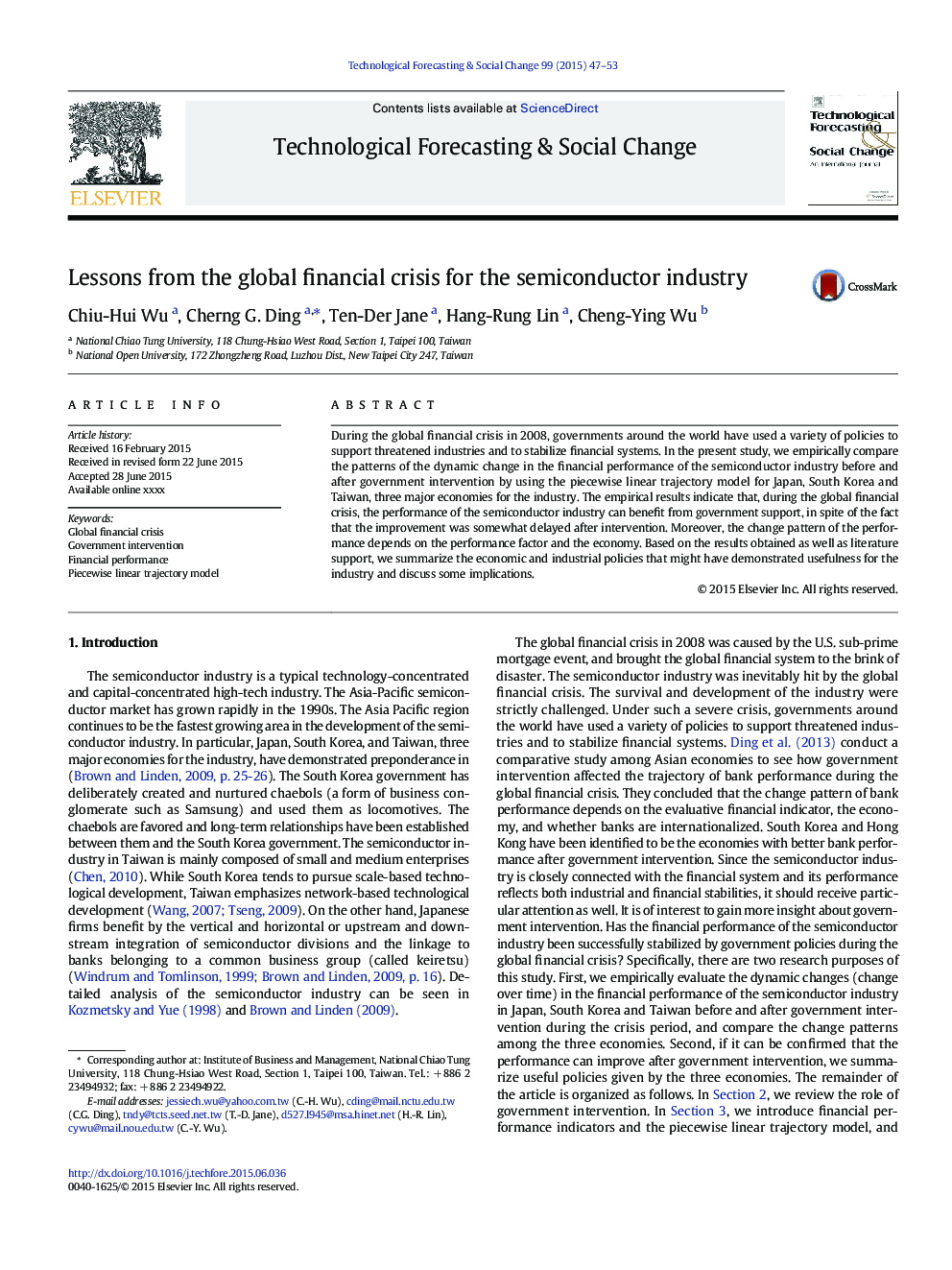| Article ID | Journal | Published Year | Pages | File Type |
|---|---|---|---|---|
| 7256439 | Technological Forecasting and Social Change | 2015 | 7 Pages |
Abstract
During the global financial crisis in 2008, governments around the world have used a variety of policies to support threatened industries and to stabilize financial systems. In the present study, we empirically compare the patterns of the dynamic change in the financial performance of the semiconductor industry before and after government intervention by using the piecewise linear trajectory model for Japan, South Korea and Taiwan, three major economies for the industry. The empirical results indicate that, during the global financial crisis, the performance of the semiconductor industry can benefit from government support, in spite of the fact that the improvement was somewhat delayed after intervention. Moreover, the change pattern of the performance depends on the performance factor and the economy. Based on the results obtained as well as literature support, we summarize the economic and industrial policies that might have demonstrated usefulness for the industry and discuss some implications.
Related Topics
Social Sciences and Humanities
Business, Management and Accounting
Business and International Management
Authors
Chiu-Hui Wu, Cherng G. Ding, Ten-Der Jane, Hang-Rung Lin, Cheng-Ying Wu,
